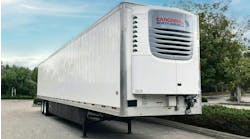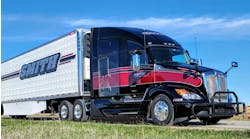“Meat and poultry processors are looking for ways to reduce labor, improve product quality, plant safety, and productivity, and automating combo-bin chilling is proving to be a quick way to capitalize on all those goals,” said Mark DiMaggio, head of food and beverage, Linde North America.
Demand for Linde’s Accu-Chill Combo Chiller has grown significantly during the past 12 to 18 months, especially in poultry plants, DiMaggio said, and he is optimistic about 2013. The patented Combo Chiller automates handling and chilling with precision for high-volume productivity. It can process about 10,000-12,000 lbs at a time, with a typical equipment payback of six to 12 months.
In many current operations, bulk meat or deboned parts are being loaded into combo bins a layer at a time, and then a worker shovels dry ice or directs snow or ice pellets between each layer. “This is not only labor-intensive, but it produces uneven product temperatures, and requires longer equilibration times in cold storage,” said DiMaggio.
The Combo Chiller is designed to deliver more consistent temperatures from bin to bin, with a variation of 2 to 3 degrees F or less. More rapid, accurate cryogenic chilling may also reduce bacterial growth that can compromise food quality.
The Combo Chiller features an automated loading system. After the high-capacity combo bin is rolled into the chiller, bulk or deboned meat or poultry enters the top of the system and is placed on a slotted turntable. Wiper arms push pieces through the slot to evenly distribute them throughout the bin as snow is sprayed through snow horns. The carbon dioxide (CO2) snow mixes thoroughly with the meat and provides more complete contact than pellets for more rapid and efficient chilling. CO2 consumption is much lower than dry ice methods, averaging only 0.10 to 0.15 lbs of liquid per pound of product for a 10 to 15 degree F drop in temperature.
Linde performs in-plant assessments to identify current cost-to-freeze and works with processors to develop optimal process systems.
For more information, visit www.lindefood.com.


